Trying to identify the hummingbird zipping around your yard?
Hummingbirds are one of the most fascinating creatures that you can find in your backyard. It really helps to know what species of hummingbirds live in Colorado.
While the list below contains all the usual hummingbirds found in Colorado, it’s possible to find a vagrant species of hummingbird that’s not native to Colorado. This is rare but not unheard of.
The following legend can be used for each hummingbird species map to determine what time of year you can see each hummingbird in your area.
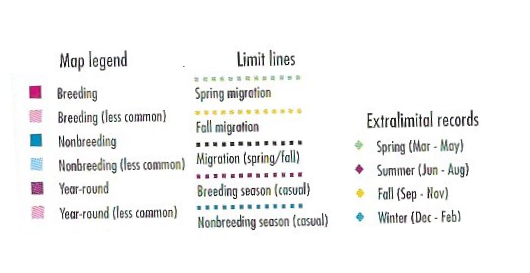
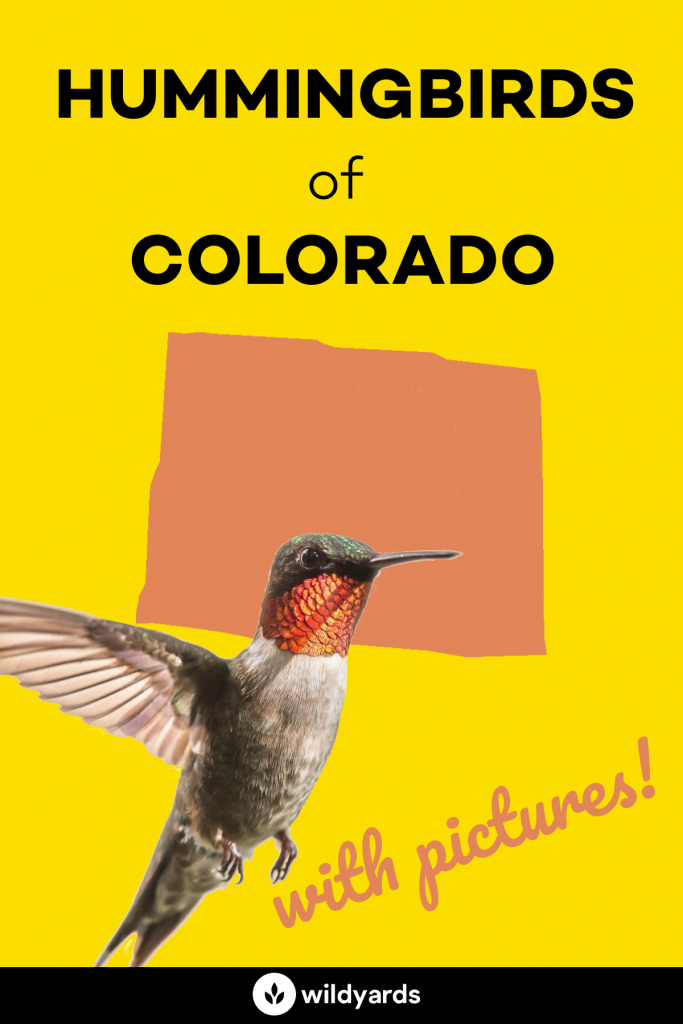
The 8 Hummingbird Species of Colorado
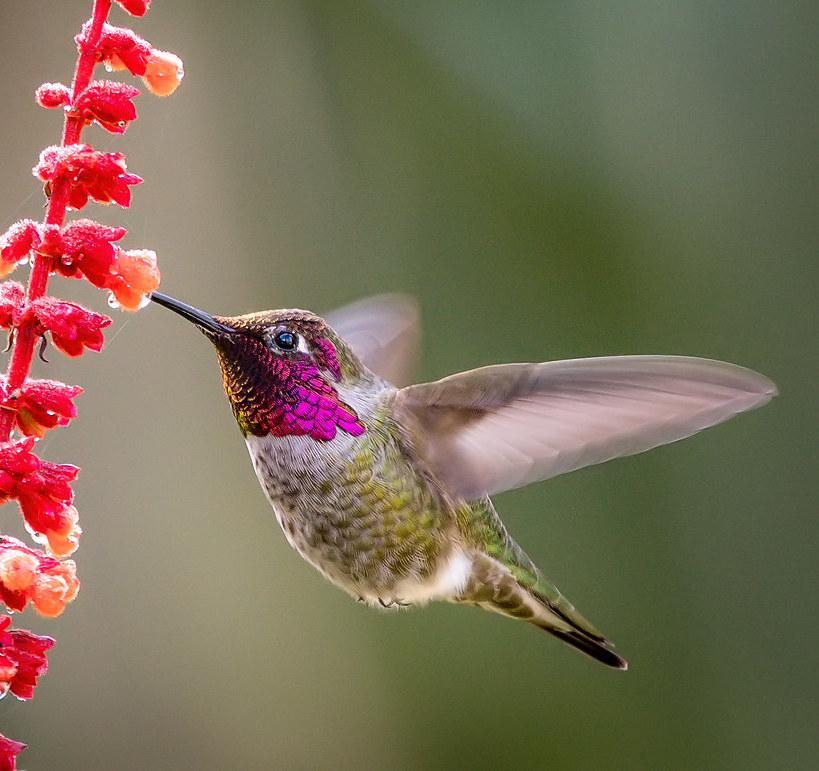
Anna’s Hummingbird
Calypte anna
Order: Apodiformes
Family: Trochilidae
Size: 3.5 – 4in (9-10cm)
Overview
Originally a native to California, the Anna’s Hummingbird is quite adaptable allowing it to expand its range northward and eastward chasing exotic flowers in urban gardens. It’s named in honor of Anna Massena, the Duchess of Rivoli and a generous patron of science. During the winter Anna’s hummingbird has been observed eating insects such as gnats and even eating sand and ashes – likely to provide essential minerals.
How to Identify
Anna’s Hummingbird is a medium-sized hummingbird with a medium sized straight black. bill. The male sports a red gorget. Unlike the Black-Chinned and Costa’s Hummingbird, Anna’s Hummingbird normally holds its tail still while hovering.
Anna’s Hummingbird Range & Migration Map
Anna’s Hummingbird is a common resident in California but has extended its range north towards the western coast of Washington and southeast to southern part of Arizona. It’s a rare winterer of western Texas.
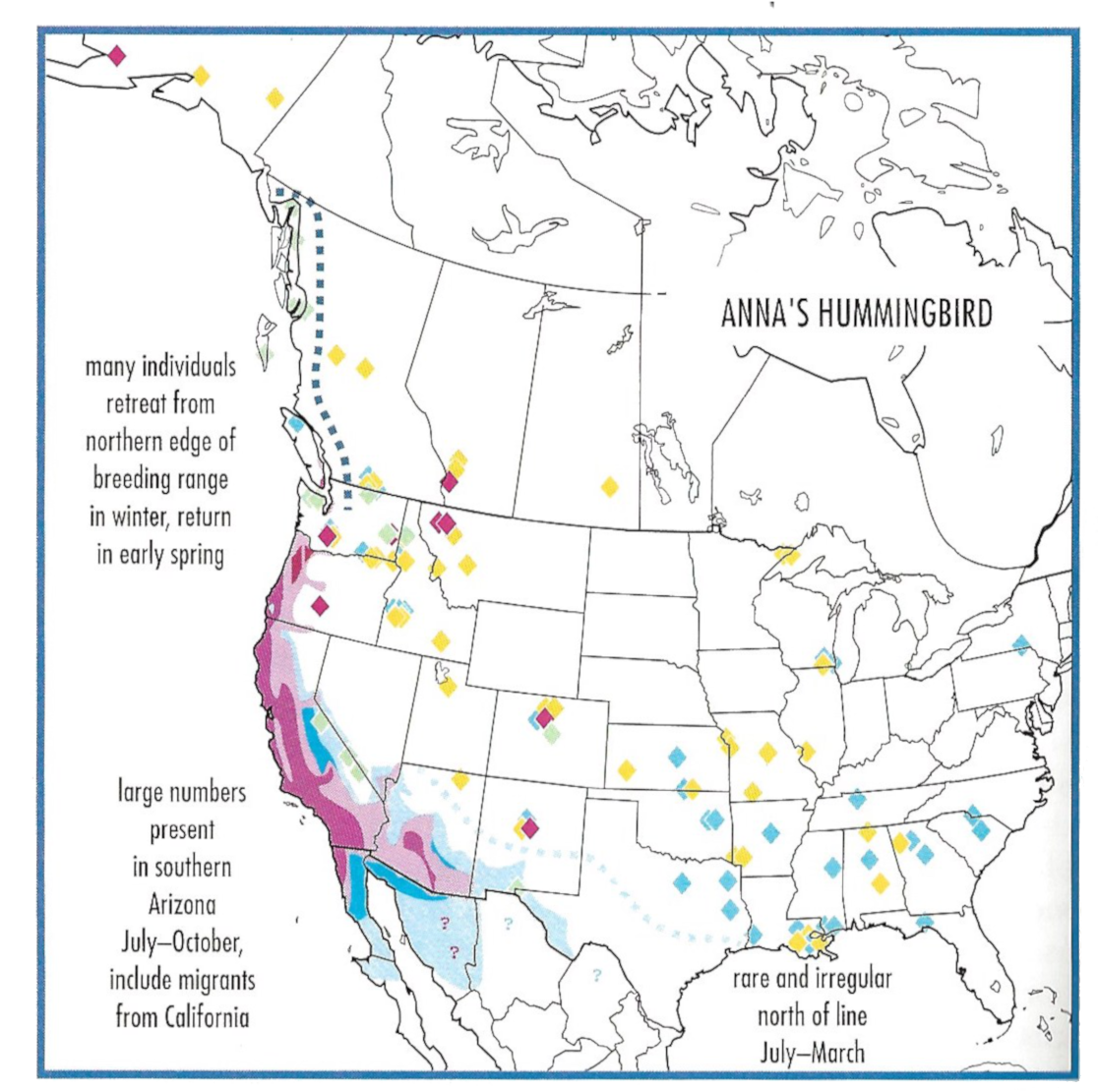
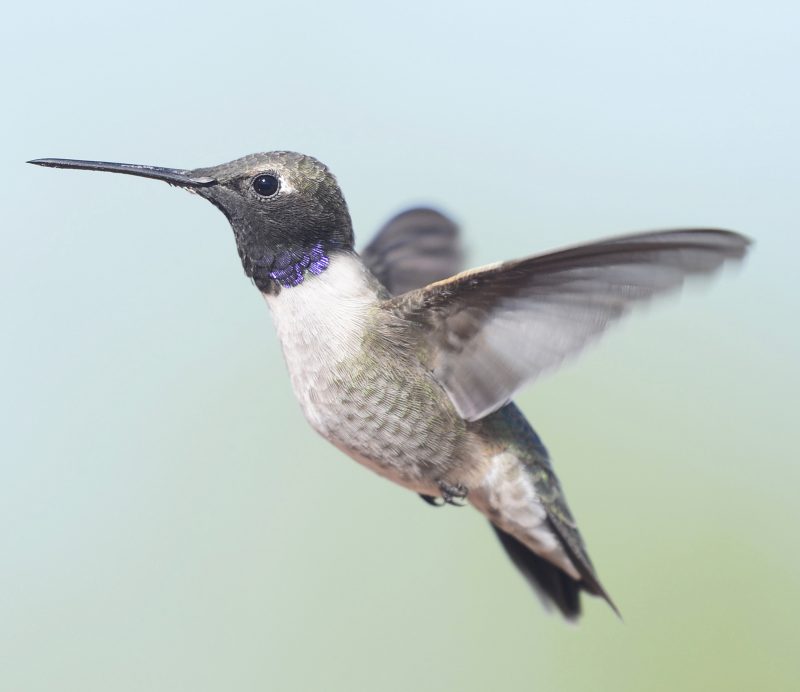
Black-Chinned Hummingbird
Archilochus alexandri
Order: Apodiformes
Family: Trochilidae
Size: 3.25 – 3.75 in (8.5 – 9.5cm)
Overview
The Black-Chinned Hummingbird is the western counterpart of the Ruby-Throated Hummingbird. The species was named in 1846 to honor its discoverer – Dr Alexandre. It can be found in most types of habitats, including backyards, all over the western United States. It pumps its tail almost constantly while in flight and isn’t picky about what plants it takes nectar from.
How to Identify
The Black-Chinned Hummingbird is a small hummingbird with a medium to long decurved bill and a grey crown. It’s gorget is mostly black with a hint of violet in the correct sunlight.
Black-Chinned Hummingbird Range & Migration Map
The small hummingbird breeds in most the western states, going as far east as eastern Texas. Can be found during the winter in the southern states bordering the Gulf of Mexico.
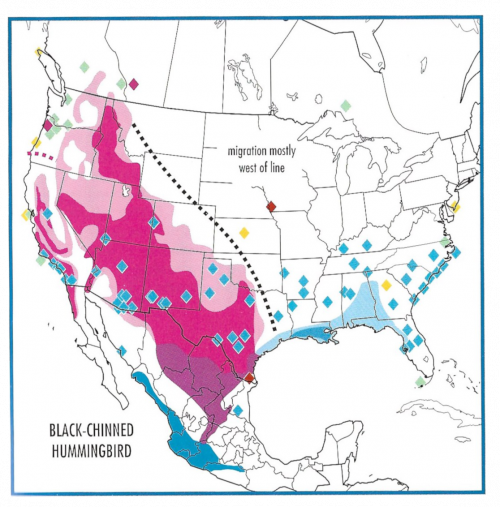
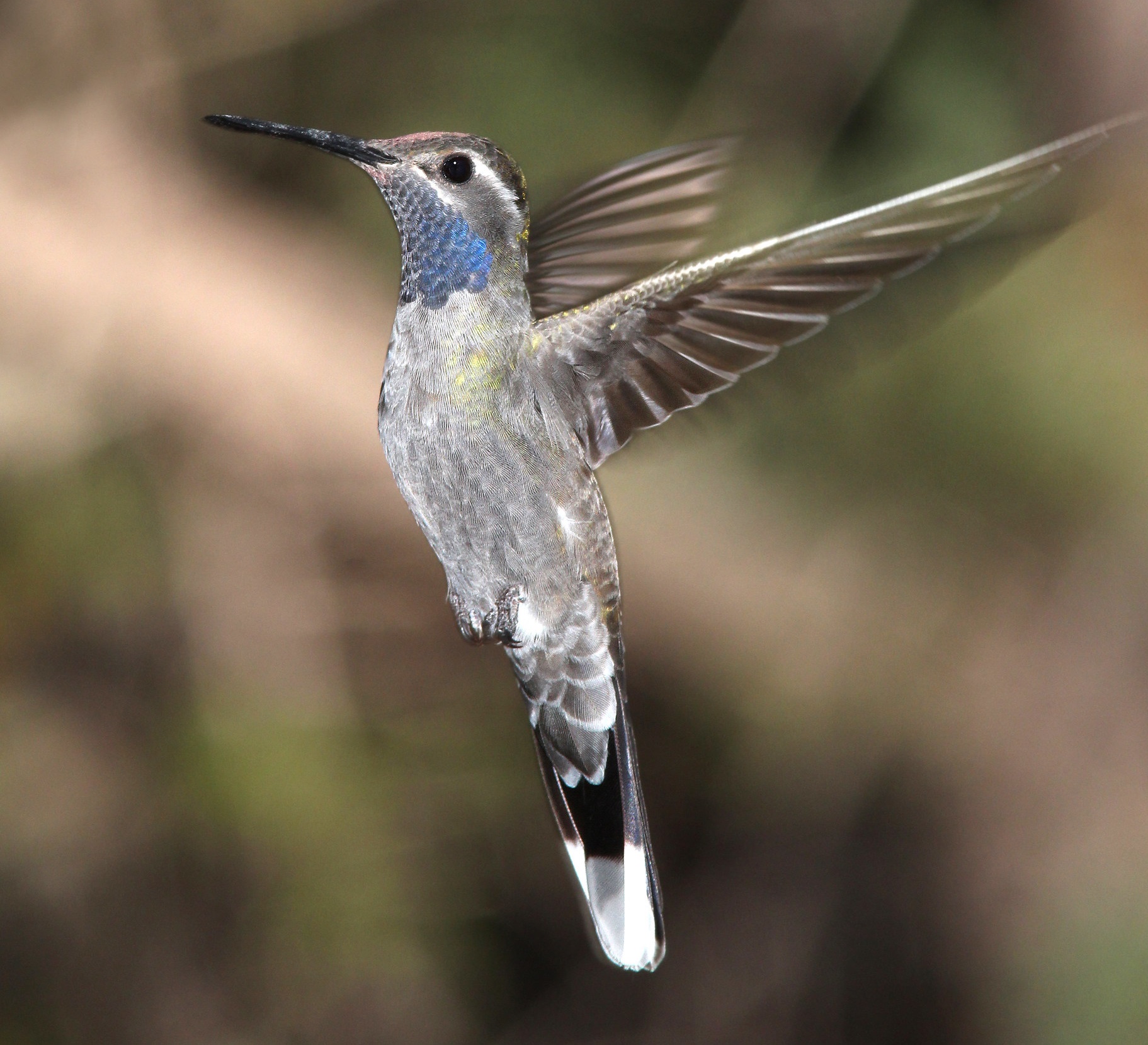
Blue-Throated Mountain-gem
Lampornis clemenciae
Order: Apodiformes
Family: Trochilidae
Size: 4.3 – 4.7in (11 – 12cm)
Overview
The blue-throated mountain-gem is an extremely rare species of US hummingbird that you will find hiding out in forests of oak and pine. It’s also one of the biggest you will find across the states, even though there are said to be fewer than 2,000 living in the country right now. They tend to enjoy feeding on sugar water and you’ll find them fluttering around in open woods. They can live to an impressive age, with the oldest on record having been almost eight years old.
How to Identify
Blue-throated mountain-gems are, as mentioned, fairly large – they are stunning to watch from afar, and what’s more, you will be able to spot them thanks to their white striping around their beaks. As their names suggest, they have blue throats, and they tend to be some of the more vocal hummingbirds, often singing together.
Blue-Throated Mountain-gem Range & Migration Map
If you are lucky, you may be able to spot these hummingbirds across the forests of southern states, specifically in the mountain ranges of western Texas, southern New Mexico, and southeastern Arizona. They tend to group up near mountains, too, though it’s not unheard of to see them in backyards across these states. They have been spotted in Colorado (July to August), Louisiana (fall, spring), California (summer), South Carolina (August), North Dakota (June), and Utah (August) during their migratory seasons.
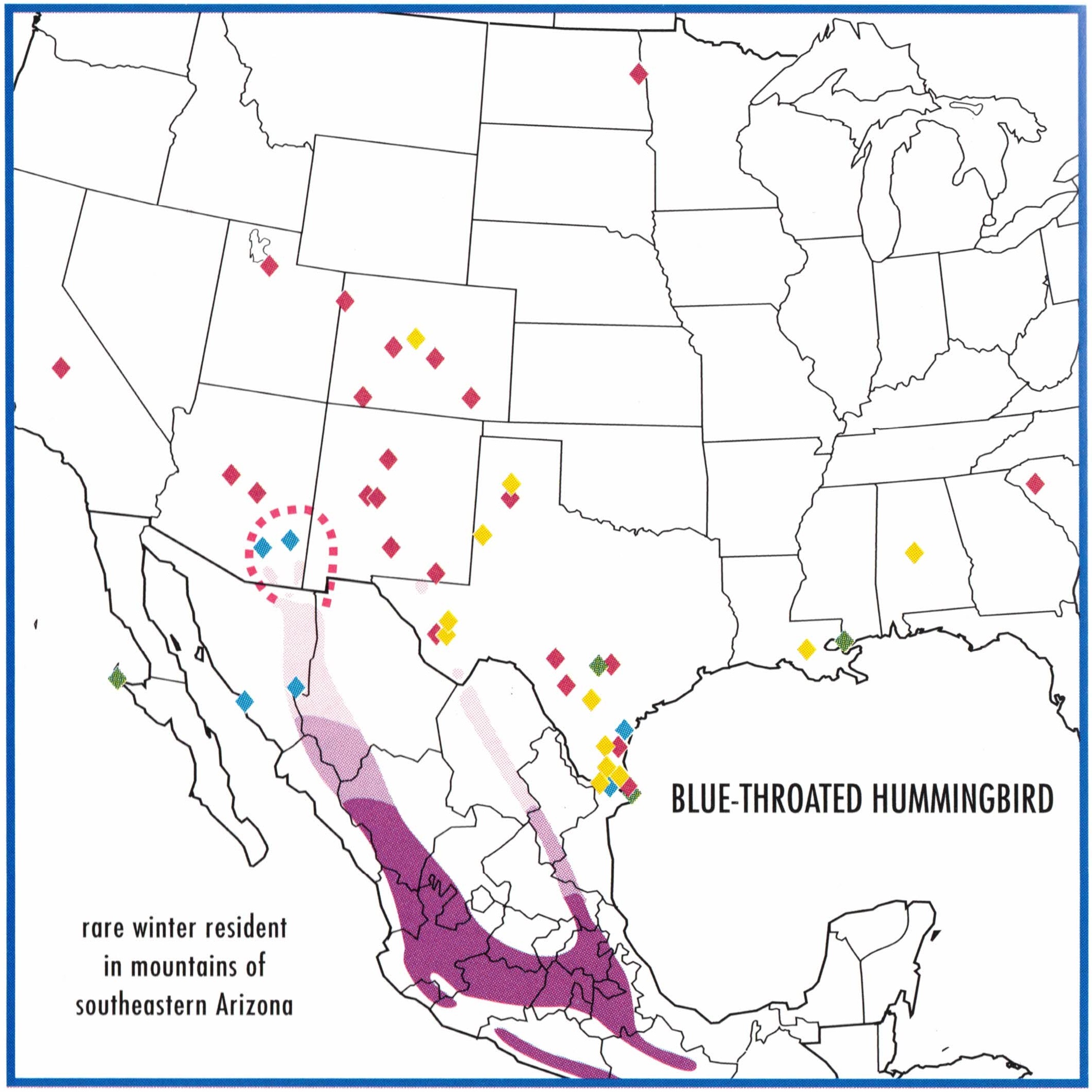
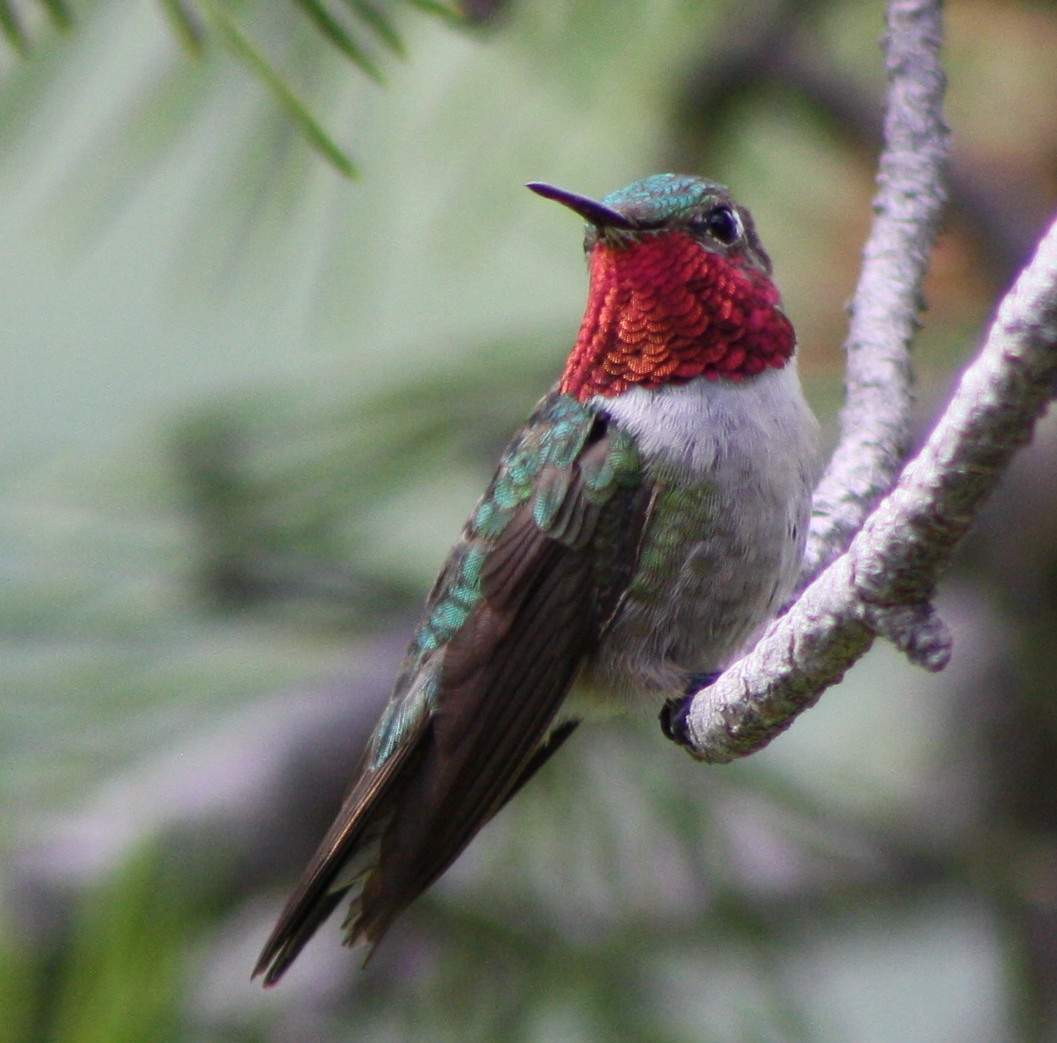
Broad-Tailed Hummingbird
Selasphorus platycercus
Order: Apodiformes
Family: Trochilidae
Size: 3.75 – 4in (9.5 – 11cm)
Overview
This medium-sized hummingbird is one of the most hummingbirds of the Rocky Mountains. Their call, which resembles the ringing of tiny bells, is a common sound during the Rocky Mountain summers. Fun fact, a female Broad-Tailed Hummingbird is the oldest known wild hummingbird in the United States reaching a ripe old age of 12 years.
How to Identify
The Broad-Tailed male hummingbird sports a hot pink gorget which contrasts with a white breast. It’s medium-sized with a a decently long tail and straight black bill. It’s a mild-manned hummingbird that is easily bullied by other hummingbirds.
Broad-Tailed Hummingbird Range & Migration Map
The Broad-Tailed Hummingbird breeds from Wyoming and central Idaho down to Mexico. Winters in Mexico and can rarely be found along the Gulf of Mexico states. It prefers mountain forests and woodlands.
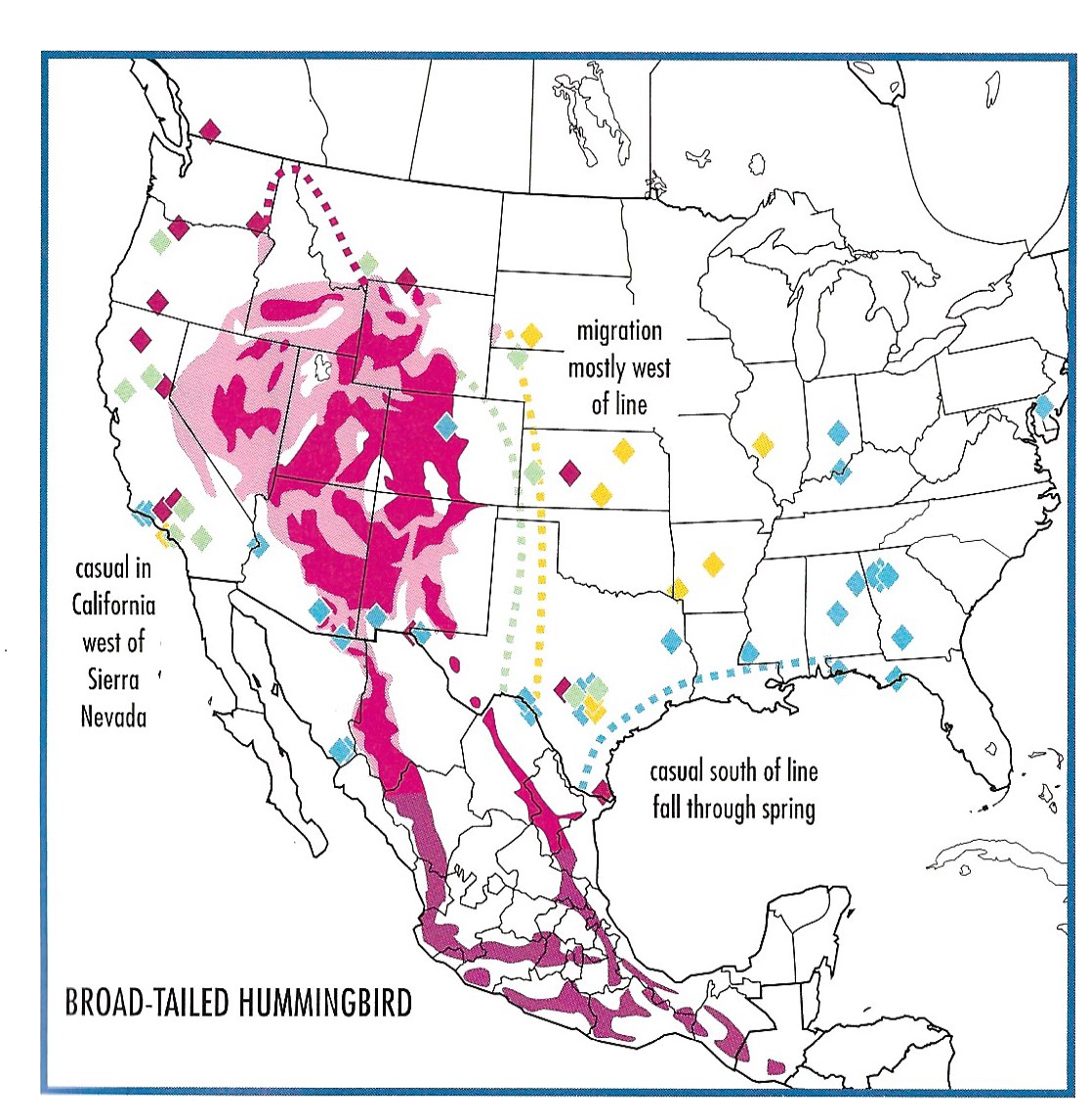
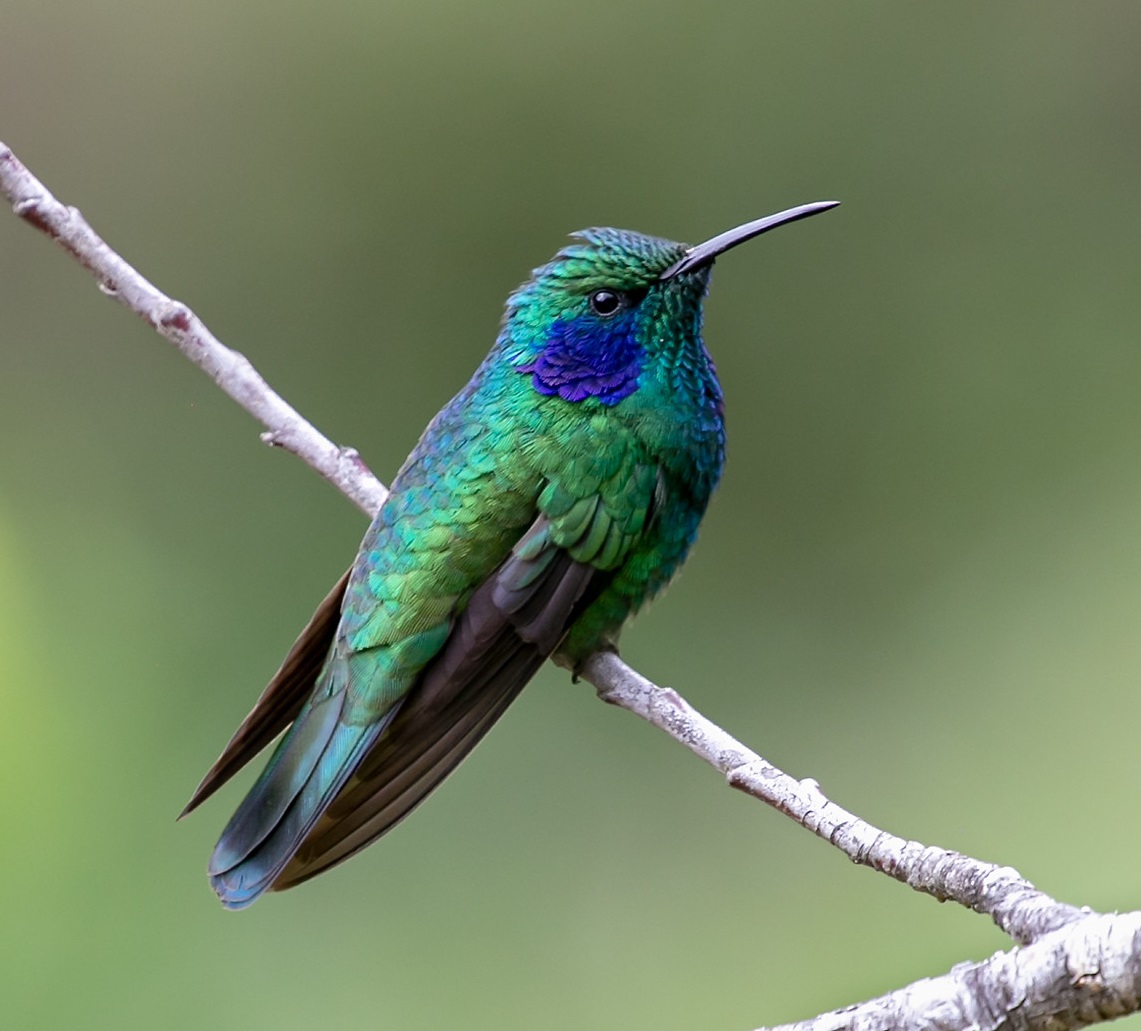
Green-Violet Ear Hummingbird
Colibri thalassinus
Order: Apodiformes
Family: Trochilidae
Size: (9.7 – 12cm)
Overview
Otherwise known as the Mexican violet ear, this hummingbird is a vagrant species that frequent southern states via Mexico. It’s regarded as something of a nomad, and they tend to prefer forest clearings to breed in. They are some of the most striking hummingbird species traveling in this direction – though they are known to be quite aggressive, and will chase other species off a feeder.
How to Identify
This hummingbird has a stunning array of green plumes and purple patches to the ears, with a dark pair of wings and a blue-tinted tail. Telling the difference between males and females can be difficult, however, males are thought to be a little more striking or bold in color.
Green-Violet Ear Hummingbird Range & Migration Map
The green violet ear is a born wanderer, with more than 30 different records indicating visitations to eastern Texas in the past 60 years. However, it’s also been spotted traveling from Mexico and Central America as far and as wide as Alabama, Arkansas, California, Colorado, Kentucky, Louisiana, Michigan, Mississippi, Montana, North Carolina, Ohio, Oklahoma, and Wisconsin.

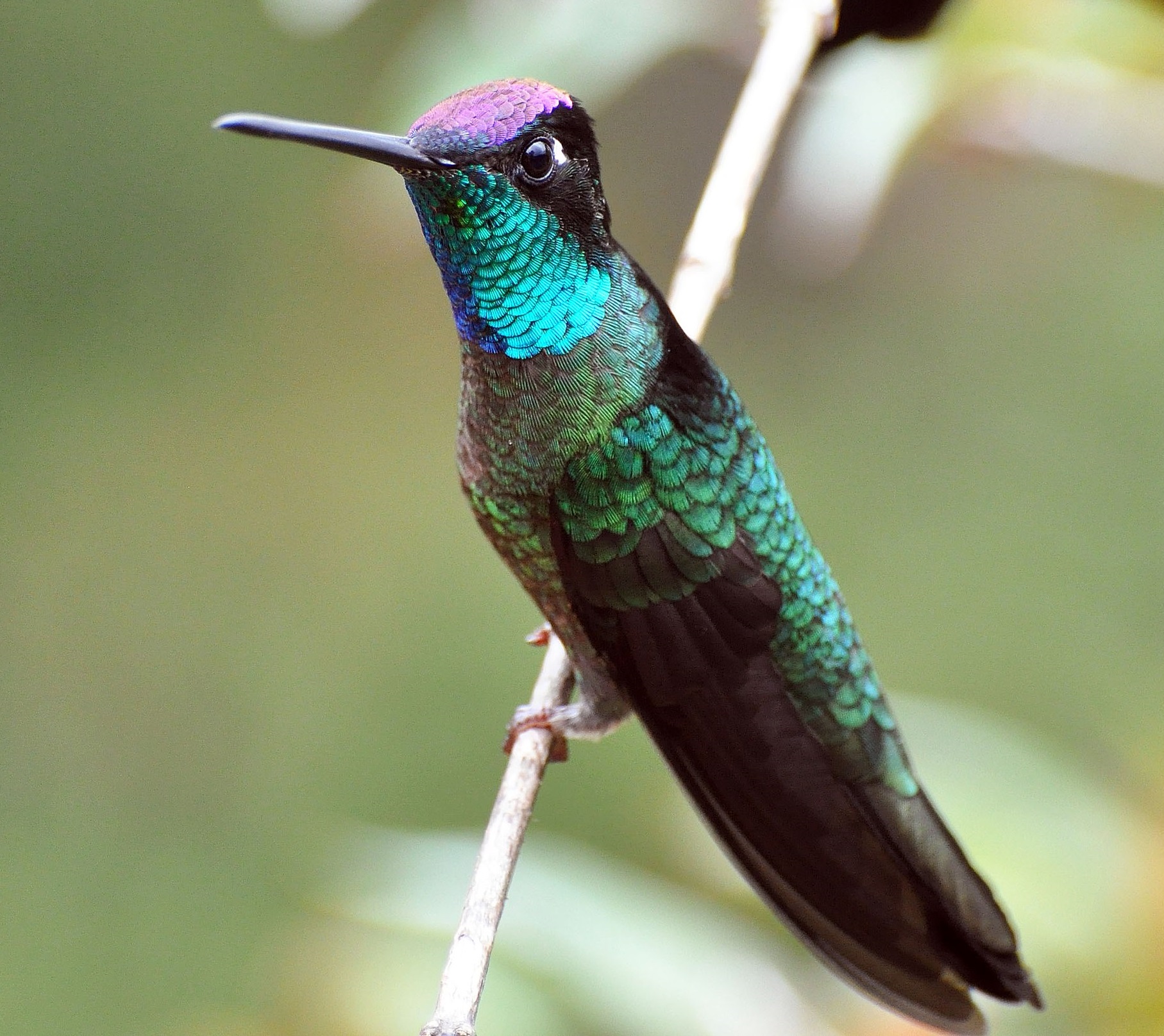
Rivoli’s Hummingbird
Eugenes fulgens
Order: Apodiformes
Family: Trochilidae
Size: 4.3 – 5.5in (11 – 14cm)
Overview
Like Anna’s hummingbird, Rivoli’s hummingbird is also named after a member of the Rivoli – specifically, the Duke of Rivoli, Anna’s husband. This species used to be called the Magnificent Hummingbird, but was recently renamed to distinguish itself from another species that has a blue gorget as opposed to the purple one that Rivoli’s hummingbird has. This particular avian is well-loved for its stunning colors in green and purple, and for its long body! It has one of the longest bills in the hummingbird species, and its heart rate can reach a blistering pace of 1,200 bpm!
How to Identify
Rivoli’s hummingbirds are wildly colored in waves of green, blue and purple, with touches of yellow. They are fairly large as hummingbird species go, and they are easy to spot as they have quite long, tall statures compared to others that are native in the US!
Rivoli’s Hummingbird Range & Migration Map
Rivoli’s hummingbirds breed primarily in the mountain ranges of western Texas, southeastern Arizona, and south-central New Mexico. The males are highly nomadic and banded birds have traveled hundreds of miles in a season. Sightings of this species can be seen in Colorado (May to October), Alabama (September to February), Arkansas (July), California (April), Georgia (winter), Minnesota (July), Nevada (June), Utah (July), Wyoming (June to July).
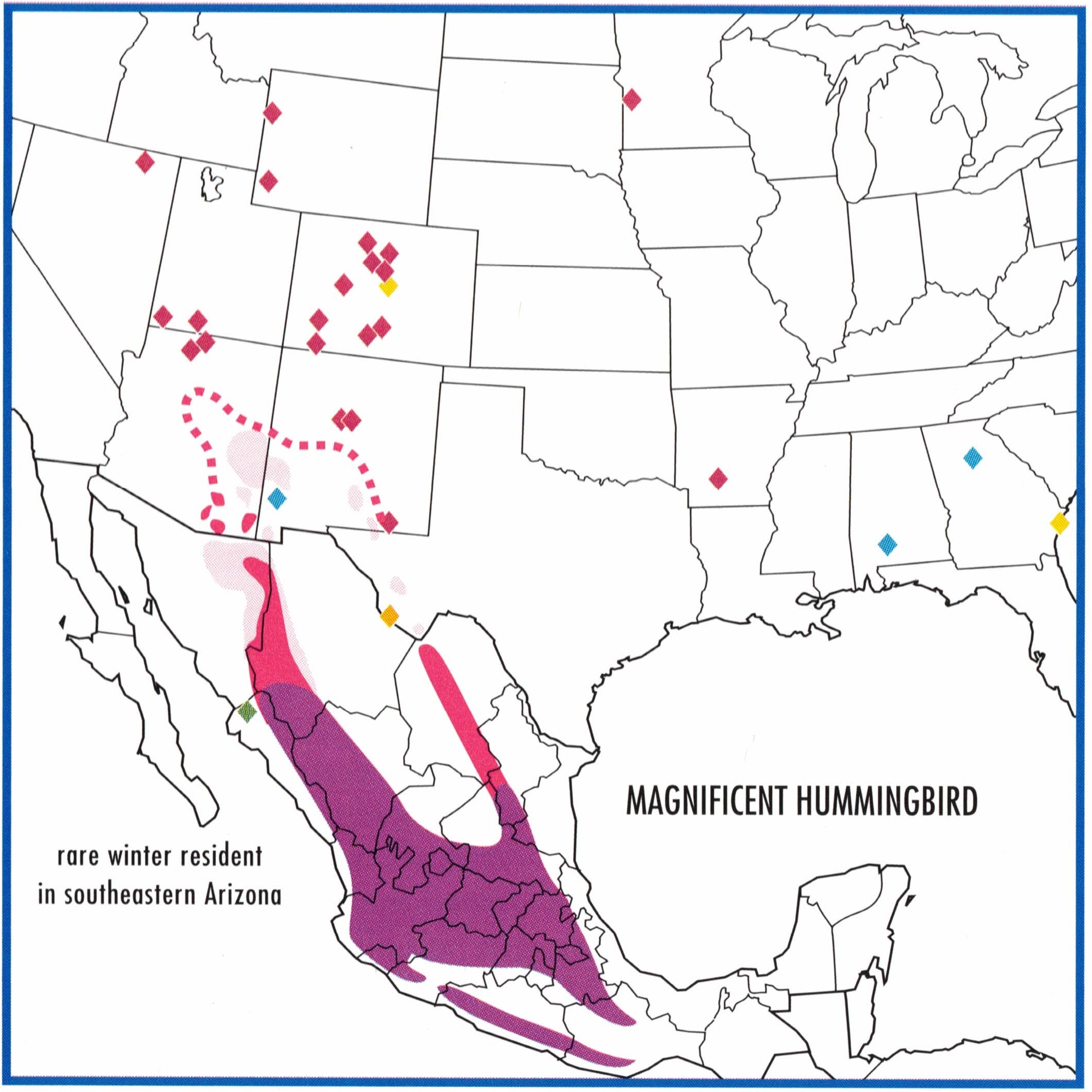
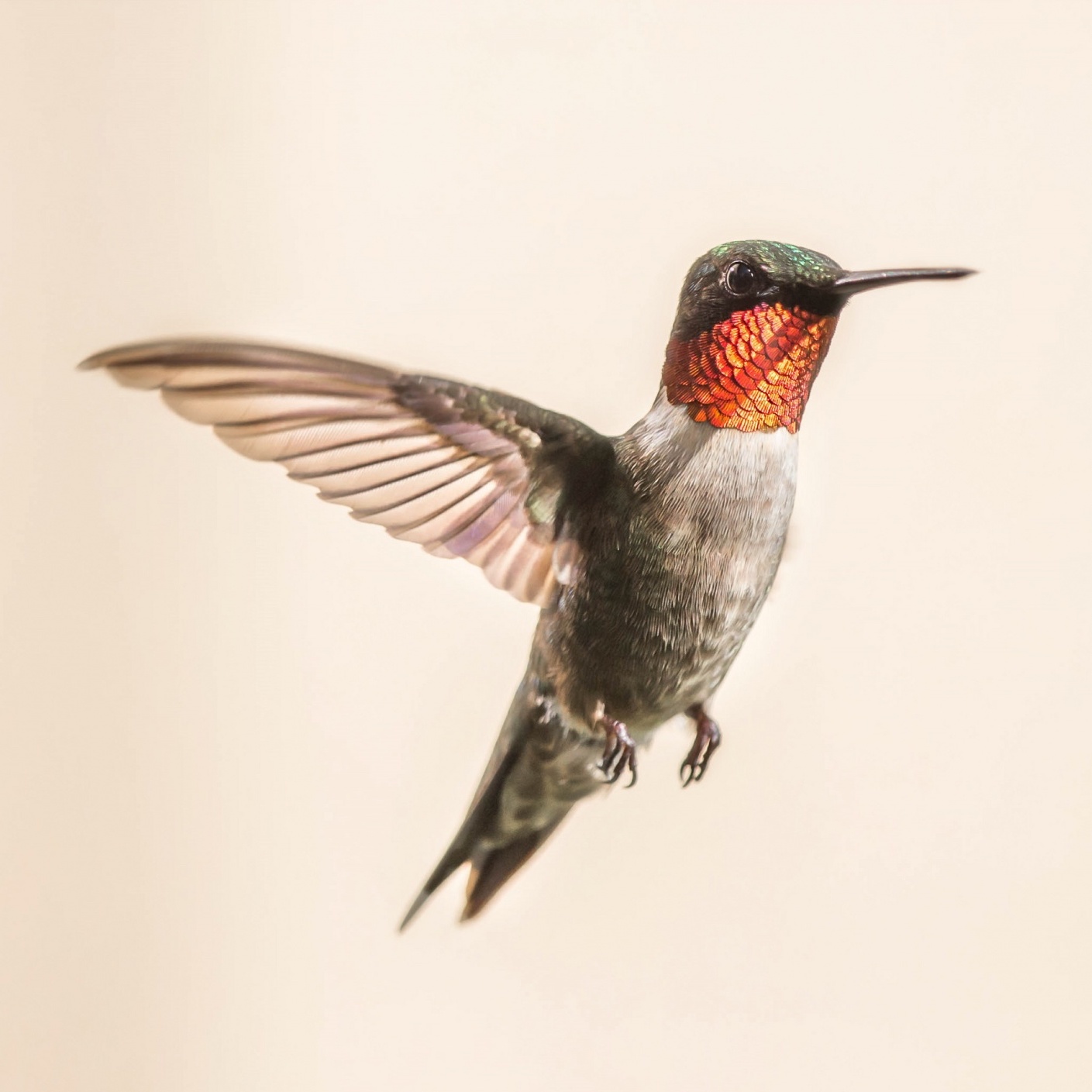
Ruby-Throated Hummingbird
Archilochus colubris
Order: Apodiformes
Family: Trochilidae
Size: 3.25 – 3.75 in (8.5 – 9.5cm)
Overview
The ruby-throated hummingbird is one of the most commonly found hummingbirds of the United States. In fact, it’s the only one that breeds east of the Mississippi River. To reach these eastern breeding grounds, the Ruby-Throated Hummingbird takes a perilous route of flying over 500 miles non-stop over the Gulf of Mexico.
How to Identify
This hummingbird is on the smaller side. The male sports a handsome scarlet gorget and a black chin strap which distinguishes it from the Anna’s and Broad-Tailed hummingbirds.
Ruby-Throated Hummingbird Range & Migration Map
The Ruby-Throated hummingbird breeds in eastern United States and prefers hardwood, pine and mixed forests starting in the spring and retreats to Mexico in the winter.
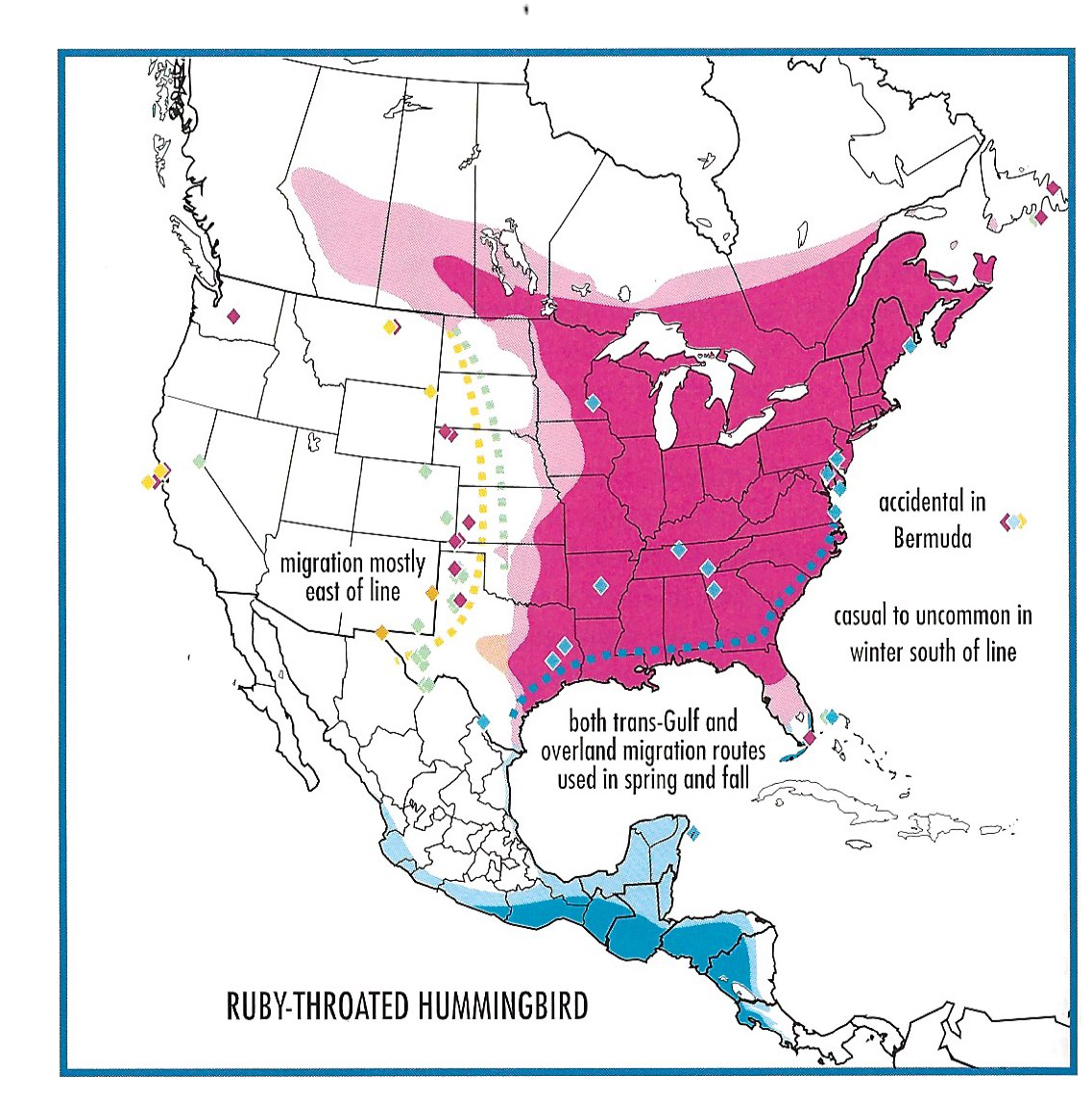
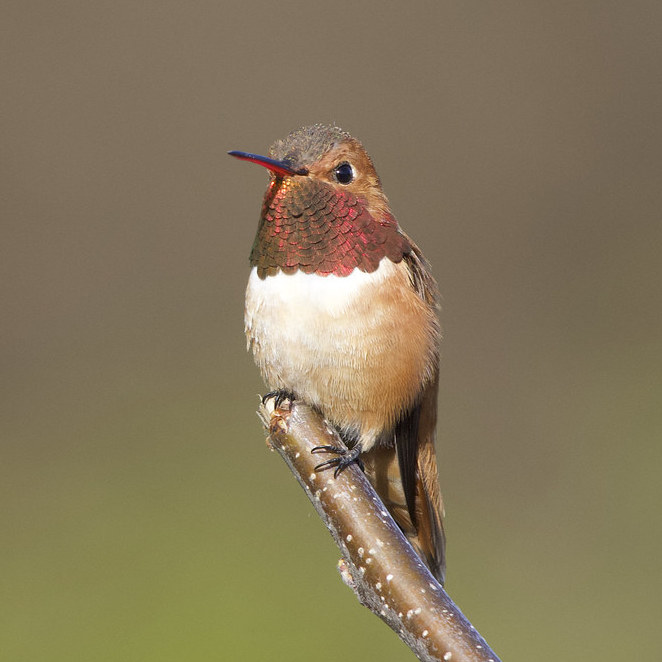
Rufous Hummingbird
Selasphorus rufus
Order: Apodiformes
Family: Trochilidae
Size: 3.5 – 4in (9 – 10cm)
Overview
The Rufous Hummingbird breeds farther north than any other hummingbird in the United States. It’s an aggressive species which makes it an unwelcome guest among hummingbird feeders. This hummingbird is an important part of the Pacific Northwest ecosystem, acting as a pollinator where the insects are at a disadvantage due to their cold-bloodedness.
How to Identify
The most distinguishing feature of the Rufous Hummingbird is the male’s rufous gorget that’s hard to miss. It’s a relatively small hummingbird with a short black bill. With the rufous plumage and aggressive behaviour, you’ll have no problem identifying male Rufous Hummingbirds.
Rufous Hummingbird Range & Migration Map
The Rufous Hummingbird breeds from the southeastern tip of Alaska down to the northern most parts of California, going as far east as Montana. During the winter, it migrates down to the Gulf of Mexico states.
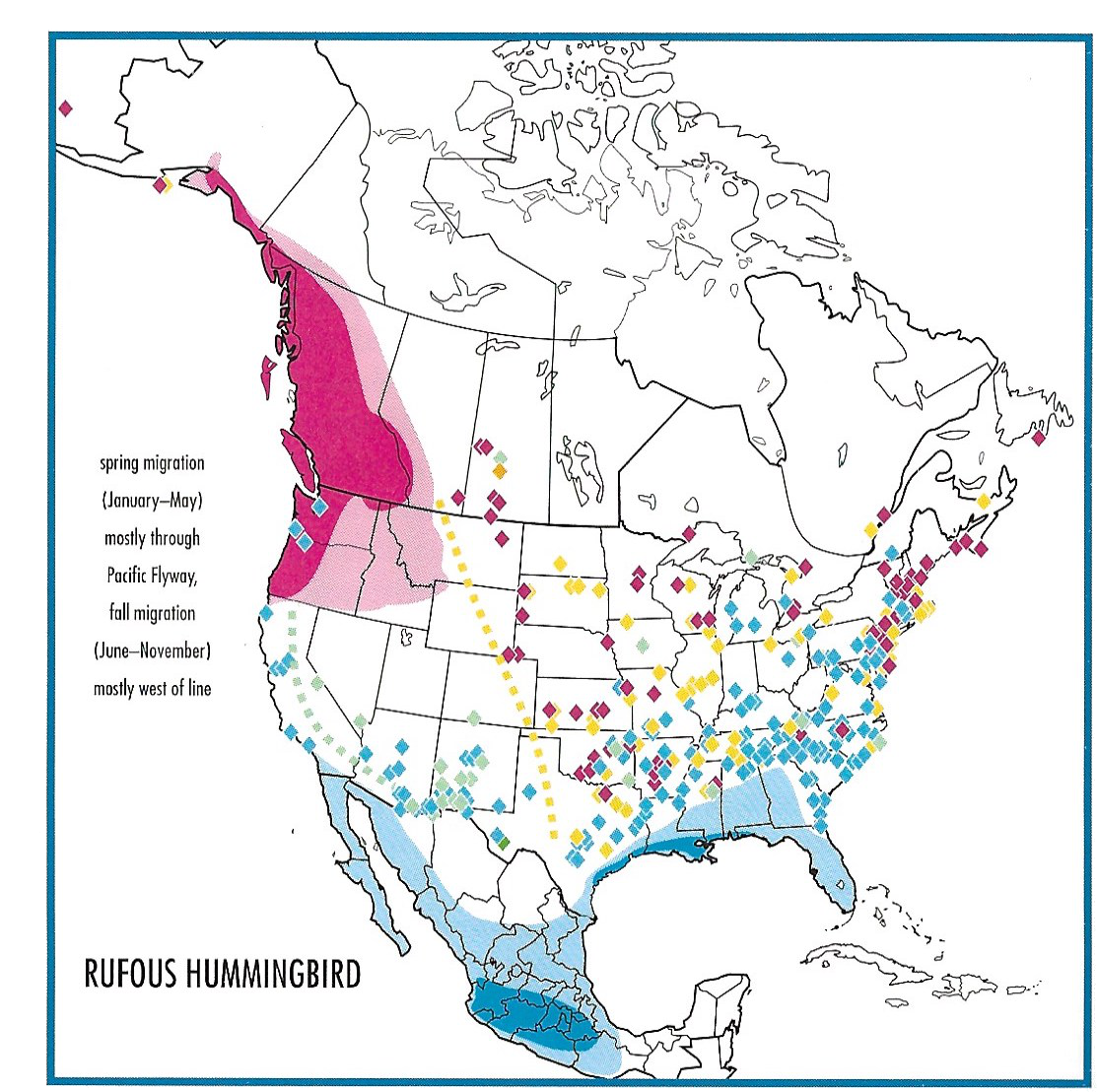
How to Attract Colorado Hummingbirds to Your Yard
Want to see more hummingbirds in your backyard?
We have all the information you need on our site to help you do that. First, we recommend you read our guide on how to attract hummingbirds to your yard. That’ll give you the basics of what’s required to attract hummingbirds.
Then, we’d recommend reading our buyer’s guide on choosing the best hummingbird feeder. Setting up a hummingbird feeder or two is the best way to guarantee that hummingbirds will visit your yard.
There are a bunch of other ways to attract hummingbirds such as getting a bird bath and planting native flowers that attract hummingbirds.
All State Hummingbirds
Want to see what hummingbirds species are found in other states? Here’s our complete list of hummingbirds found in each state:
